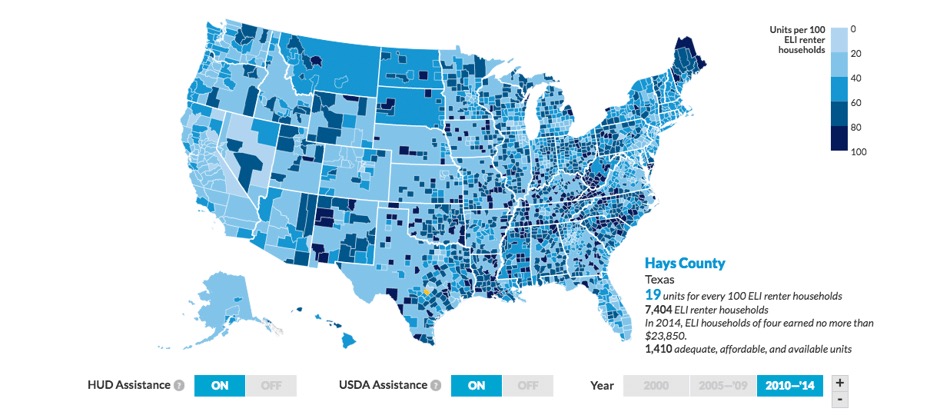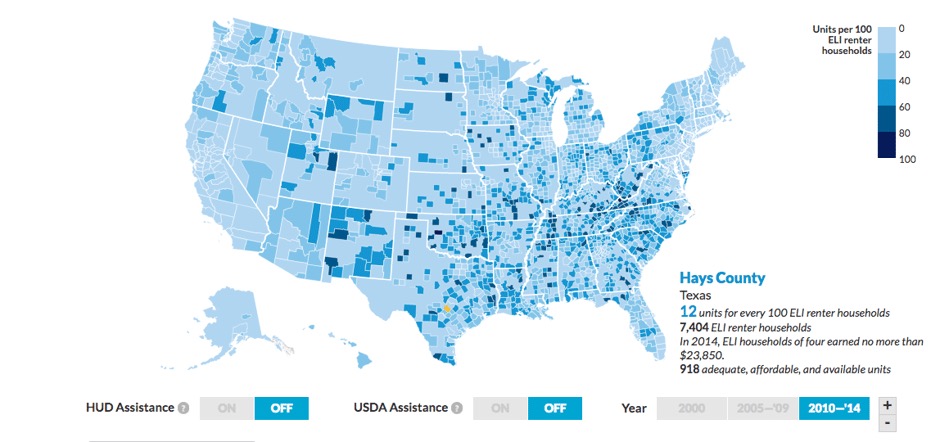This is a problem that transcends the rural-urban divide.
The affordable housing crisis has spared no county—rural or urban. From small towns like Traverse City, Michigan, to big expensive cities like San Francisco, a cheap and decent place to live is hard to come by. And it would be even harder without government support, according to a new report by the Urban Institute.
Nationwide, only 21 units are available per 100 extremely low-income renter households (those earning below 30 percent of the area median income) without government assistance. With assistance, it’s 46.
UI has also created a neat interactive map, which is an update from a previous version. It lets users explore the gap between the demand and supply of affordable units in every single U.S. county. (The National Low Income Housing Coalition released a similar report for states and metros this year, based 2015 one-year American Community Survey data. The UI report is based on 2010-2014 five-year estimates, which is better for a county-level analysis.) The UI map also lets users toggle the impact of assistance from the Department of Housing and Urban Development (HUD) and the Department of Agriculture (USDA).

The map shows how much more severe the problem is in urban counties. Overall, they have 42 units per every 100 low-income renting household, compared to 62 among rural counties. But in a blog post, the UI researchers note that while housing costs are lower in the countryside, so are incomes. And poverty rates are higher. The researches detail the challenges of some of these small towns:
From our partners:
In some small towns, rising rents are making the affordability crisis worse. Small resort towns, like Breckenridge, Colorado, and Traverse City, Michigan, are feeling the squeeze of gentrification. Tourism fuels the economy, opening up jobs for locals and seasonal workers, but affordable rentals are hard to find. And many landlords can earn more from short-term rentals to tourists than long-term leases to residents.
In some communities, like Sunflower County in the Mississippi Delta, deep-seeded economic distress from manufacturing job loss and changes in the agriculture industry has made it harder for families to cover basic expenses. With the poverty rate and unemployment rate nearly double the national average, many Sunflower County households have too few resources to afford housing.
[/infobox]
Without federal assistance, rural counties would lose 40 percent of the housing stock that’s affordable to residents who live in deep poverty. Urban ones would be down by 57 percent. Here’s what America would look like:

It might follow that, for the Trump administration to achieve its stated goals of making rural America more prosperous and fixing the “inner cities,” it would boost USDA and HUD assistance programs instead of cutting them, as it has proposed. That, and measures to alleviate the pressures renters have faced since the Great Recession, would go a long way toward making America affordable again.
This feature originally appeared in Citylab.

















